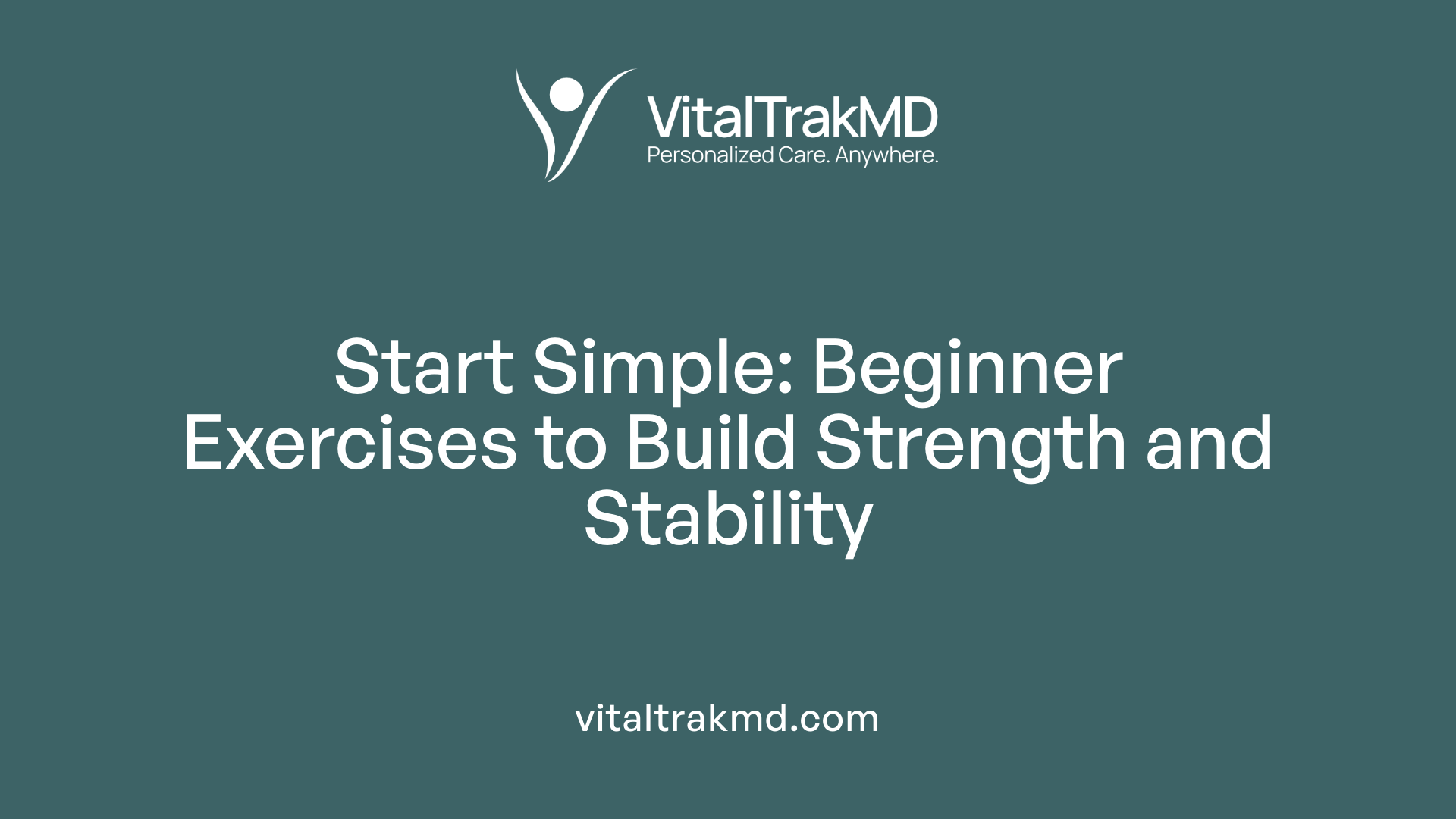Incorporating Mobility Exercises into Home Care Plans for Seniors

Importance of Mobility in Senior Home Care
Mobility is a cornerstone of independence and quality of life for seniors. Maintaining safe and effective movement capabilities within the home environment is essential to prevent falls, manage chronic conditions, and facilitate daily activities. Incorporating targeted mobility exercises into home care routines offers numerous benefits, from improved physical health to enhanced mental well-being, enabling seniors to retain autonomy and improve their overall quality of life.
Understanding Mobility in Home Care: A Foundation for Independence

What is mobility in home care?
Mobility in home care refers to a person's ability to move safely and independently within their home and community settings. It encompasses a range of physical capabilities, including walking, transferring from one position to another, and using mobility aids like canes, walkers, or wheelchairs.
Support services in home care focus on assisting with these movements to prevent falls, reduce injuries, and promote active participation in daily activities. This includes helping seniors get out of bed, walk to the bathroom, or move around the house safely. By providing such assistance, caregivers aim to enhance independence, maintain muscle strength and flexibility, and boost confidence.
Beyond basic movement, mobility assistance also extends to facilitating access to transportation for medical appointments and social activities. This support is vital for aging individuals or those with disabilities, as it allows them to remain engaged, socially connected, and self-reliant.
Overall, mobility in home care is about empowering individuals to stay active and healthy, thus improving their quality of life. Proper support in this area helps prevent falls and injuries, manage chronic conditions better, and support aging in place with dignity.
Selecting Effective Exercises for Senior Home Routines

What are some of the best exercises for seniors to perform at home?
For seniors looking to stay active safely at home, the focus should be on routines that enhance strength, balance, flexibility, and cardiovascular health. Practical exercises such as chair squats, wall push-ups, and leg lifts help maintain muscle strength and improve mobility. Balance exercises like tandem walking, single-leg stands, and shifting weight are essential for reducing fall risk.
Flexibility plays a vital role in daily comfort and movement, with gentle stretches including neck rotations, shoulder rolls, seated spinal twists, and ankle circles helping keep joints limber.
Low-impact cardiovascular activities such as walking, swimming, cycling, and chair yoga are highly effective without stressing joints. These activities can be easily incorporated into daily routines or performed in short daily sessions.
A weekly goal of about 150 minutes of moderate exercise, divided into sessions of 10-15 minutes, ensures effective physical health improvements. Combining strength, balance, flexibility, and aerobic exercises creates a comprehensive routine to support independence.
Before beginning any new exercise program, it is advisable to consult with a healthcare professional. This step is especially important for seniors with mobility limitations or chronic health conditions, ensuring routines are safe and tailored to individual needs.
Overall, the best exercises for seniors at home are those that are enjoyable, sustainable, and adaptable, ensuring consistent practice for long-term health benefits.
Strategies for Incorporating Mobility Exercises Safely and Consistently
What are effective strategies for incorporating mobility exercises into home routines for seniors?
Implementing mobility exercises into daily life can greatly enhance seniors’ stability, independence, and overall well-being. To do this successfully, establishing a consistent routine is vital. Scheduling low-impact activities such as chair yoga, tai chi, and gentle stretching at the same time each day creates a habit that is easier to maintain.
Choosing simple, safe exercises tailored to individual health conditions ensures safety and effectiveness. For example, seniors with balance issues might focus on seated stretching and supported balance activities. It's helpful to begin with basic warm-up routines, like neck rolls, ankle circles, and shoulder shrugs, to prepare the body, reduce injury risk, and enhance flexibility.
Creating a safe environment is equally important. Clear floors of clutter, secure loose rugs, and use sturdy chairs with non-slip feet. Supportive devices, like handrails or walkers, can provide additional stability. Controlled movements that emphasize slow, deliberate action help prevent falls or strain.
Professional guidance can be beneficial for personalized planning. Healthcare providers, physical therapists, or fitness professionals can develop tailored routines that meet specific health concerns, encourage proper technique, and adjust exercises as needed. Regularly mixing flexibility, balance, and strength activities makes routines engaging and comprehensive.
Incorporating these strategies into daily life supports sustained participation. The goal is to foster a safe, enjoyable environment where seniors feel confident and motivated. Consistency and proper guidance not only improve mobility but also contribute to a more independent, healthier lifestyle for seniors at home.
Beginner-Friendly Exercises for Building Strength and Stability

What are some beginner exercises for seniors to improve mobility and strength?
Starting with simple, low-impact activities is ideal for seniors who are new to exercise. Gentle stretching, such as neck tilts, shoulder rolls, and ankle circles, can improve flexibility and prepare the body for movement. Regular walking, whether around the house or outdoors, offers cardiovascular benefits without overtaxing the joints.
Incorporating balance activities like shifting weight from side to side, standing on one foot (using support if needed), or practicing heel-to-toe walks can boost stability and confidence. Simple strength routines such as wall pushups, pelvic tilts, heel raises, and knee lifts are effective in building muscle strength and supporting joint health.
These exercises should be performed for about 6 minutes initially and gradually increased to 15-30 minutes as endurance improves. Aim for about five sessions per week, combining aerobic, flexibility, and strength exercises. For added variety and holistic benefits, practices like Tai Chi, water aerobics, and Pilates are excellent options. They emphasize smooth, controlled movements that promote both physical and mental well-being.
Using supportive equipment like chairs, walls, or wobble boards can help seniors exercise safely and comfortably at home. Importantly, consulting with a healthcare professional before starting any new routine ensures the exercises suit individual health conditions and mobility levels.
Safe Performance of Mobility Exercises for Seniors
What types of mobility exercises are suitable for older adults and how can they be performed safely?
Gentle mobility exercises are ideal for seniors. These include chair yoga, water aerobics, tai chi, and simple balance activities like heel-to-toe walking and standing on one foot. These routines focus on improving flexibility, strength, and stability, crucial for maintaining independence and reducing fall risks.
To perform these exercises safely, seniors should start gradually, paying close attention to proper technique. For instance, when doing balance exercises, holding onto a sturdy support like a wall or chair can prevent falls. Incorporating supportive aids such as resistance bands, light weights, or assistive devices like walkers or handrails can also boost safety.
Modifications are often necessary based on individual health conditions. For example, seniors with joint issues or arthritis might prefer seated exercises or water-based activities that reduce joint stress. Always consulting a healthcare professional or physical therapist before beginning any new exercise routine is highly recommended, especially for those with chronic illnesses or mobility limitations.
Support tools like sturdy chairs, rails, and resistance bands should be integrated into routines to promote confidence and prevent accidents. Maintaining awareness of one’s physical limits, starting slowly, and gradually increasing the intensity or duration of exercises are essential practices.
Incorporating these safety measures can help seniors enjoy the benefits of mobility exercises—such as better balance, flexibility, and muscle strength—while avoiding injuries. Regular exercise, combined with proper precautions, not only enhances physical health but also bolsters mental well-being, ensuring seniors remain active and independent longer.
Promoting Mobility and Independence Through Regular Exercise

Which exercises are especially beneficial for promoting mobility and independence in seniors?
A balanced routine of exercises focusing on strength, flexibility, balance, and endurance is essential for seniors to maintain mobility and independence.
Effective activities include tai chi and chair yoga, which gently improve flexibility and balance. Walking and water aerobics are excellent low-impact cardio options that support cardiovascular health while reducing joint stress.
Stretching routines like neck rotations, hamstring stretches, and ankle circles help preserve joint mobility and ease daily movements. Strengthening exercises such as chair squats, seated leg lifts, and wall push-ups help sustain muscle mass and support daily function.
Balance training is crucial and can be incorporated through heel-to-toe walks and single-leg stands, critical for fall prevention.
Engaging in these exercises regularly—ideally 2 to 4 times weekly—can greatly improve a senior’s confidence, ability to perform daily activities, and overall independence.
Ensuring Safety with Gentle and Modified Exercises for Seniors with Limitations

Are there adaptive or modified mobility exercises recommended for seniors with mobility limitations?
Yes, there are several adaptive exercises designed specifically for seniors facing mobility challenges. These exercises focus on maintaining strength, flexibility, and balance while being safe and manageable.
One popular approach involves chair-based workouts. Seniors can perform seated marches, arm raises, and leg lifts while sitting on a stable chair, reducing fall risk and joint stress. Resistance bands or light weights can enhance strength training in a controlled manner.
Water activities, such as water aerobics or swimming with flotation devices, provide gentle resistance that supports joints and minimizes discomfort. These low-impact exercises are especially suitable for those with arthritis or chronic pain.
Balance exercises that incorporate support are also effective. Supported tai chi, standing on one foot with the aid of a wall or chair, and gentle weight shifts can improve stability safely.
Stretching and flexibility routines, like seated yoga, neck and shoulder stretches, or gentle trunk twists, help preserve movement range.
Gradual progression is important. Starting with short sessions and increasing duration and intensity over time ensures safety. Consulting healthcare providers helps tailor exercises to individual needs, minimizing risks and promoting effective mobility maintenance.
Supporting Safe and Sustainable Mobility Improvements
Incorporating mobility exercises into home care routines is vital for promoting independence, reducing fall risk, and enhancing overall well-being among seniors. Tailored, safe, and enjoyable activities—developed with input from healthcare professionals—can significantly improve strength, flexibility, and balance. Caregivers play a crucial role in supporting seniors through encouragement, supervision, and creating an environment conducive to safe movement. By integrating evidence-based practices, utilizing adaptive modifications, and fostering social engagement, home care providers can help seniors maintain mobility and enjoy a higher quality of life well into their later years.
References
- Simple Yet Effective Mobility Exercises to Keep Seniors Active and
- Exercise Plan for Older Adults: Strength, Stretching, and Balance
- Essential Mobility Exercises for Seniors to Stay Active and ...
- Exercise Modifications for Seniors with Mobility Issues
- Adapting Exercise Routines for Seniors with Limited Physical Abilities
- Incorporating Physical Activity into In-Home Care Routines for Seniors
- Head to Toe Mobility Exercises for Seniors - Atlantic Shores
- Stretching Exercises for Seniors - My Caring Plan
- Fitness and Mobility Programs for Older Adults
- Incorporating Physical Activity into Senior Care Plans
Recent articles
Want to Feel Better and Live Healthier?
Join hundreds of patients taking control of their health with personalized care that fits their life – not the other way around.
Rated 4.8/5 by 32+ customers







